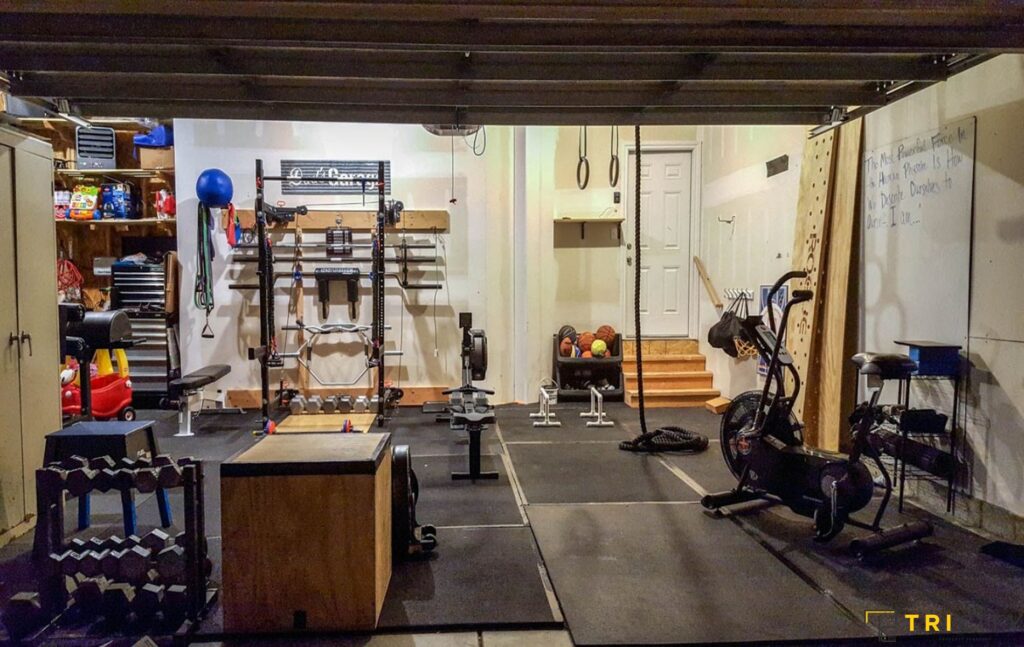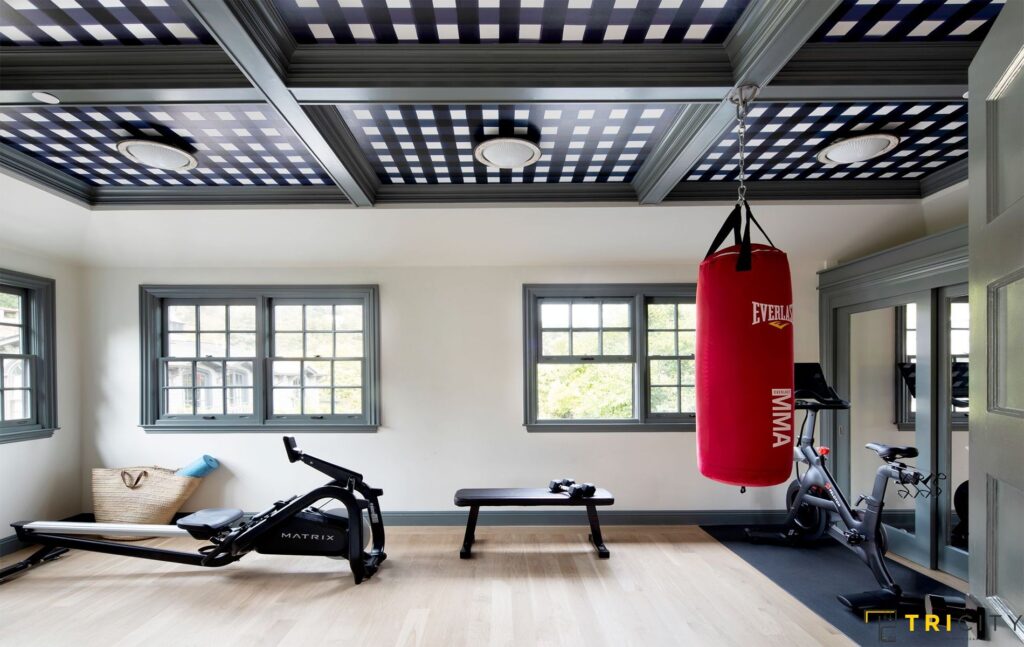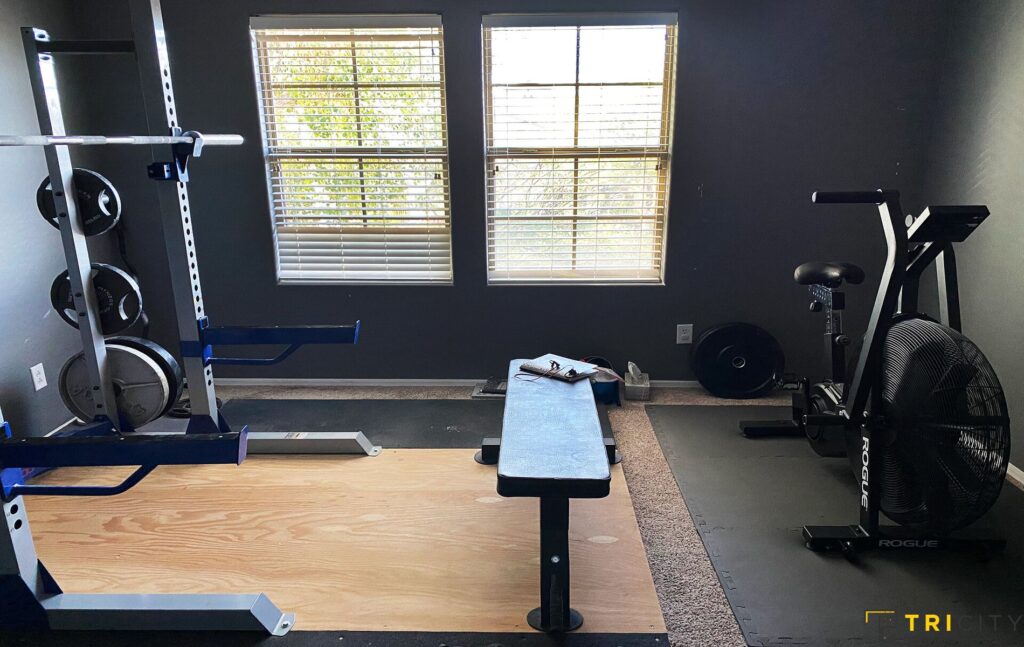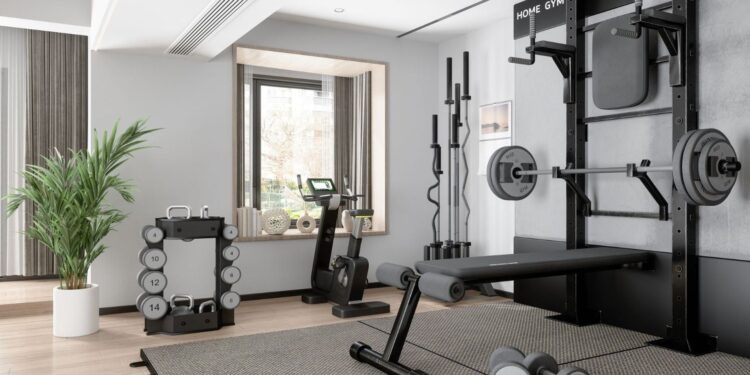Do you love working out, or do you want to get in shape? Are you short on budget or just too shy to go hit the gym with your companions? Whatever the case, a home gym on a budget can always be your savior. You can always set up a home gym to get yourself to move. Even if you are busy and your schedule does not allow you to go hit the gym, a home gym will always prove helpful.
So, if you are thinking of creating a home but are worried about the hefty expenditure, don’t worry. We have compiled some of the best tips that help you create a perfect environment for shedding a few pounds without breaking the bank.
Of course, there are several benefits of a home gym. For instance, you can exercise convenience and work out according to your preference. Besides, you don’t even need to stand in a queue to wait to use the equipment. Your home gym is all yours!
So, let’s explore.
Tips to Create a Home Gym on a Budget
If you are only starting to work out, it is essential to get your basics right. Apparently, it is our first tip for you.
Start With the Basics

Starting with the basics is a great way to create a solid foundation for your fitness routine. Here are some basics to consider:
- Cardiovascular exercise: Cardiovascular exercise, also known as cardio, is an essential component of a well-rounded fitness routine. It helps improve your heart health, increase endurance, and burn calories. Some basic cardio exercises include jogging, brisk walking, cycling, jumping rope, or using a stationary bike.
- Strength training: Strength training is essential for building muscle, improving bone density, and increasing metabolism. Basic strength training exercises include bodyweight exercises such as push-ups, squats, lunges, and planks. You can also use free weights, resistance bands, or weight machines.
- Flexibility training: Flexibility training, such as stretching and yoga, helps improve the range of motion, reduce the risk of injury, and reduce muscle tension. Basic flexibility exercises include static stretching, dynamic stretching, and yoga poses. You can perform them in your home gym.
- Proper form and technique: When starting any new exercise, it’s important to focus on proper form and technique. This can help reduce the risk of injury and ensure that you get the most out of each exercise.
- Gradual progression: It’s important to start slowly and gradually increase the intensity and duration of your workouts over time. This can help prevent injury and ensure that you continue to see progress.
Remember, starting with the basics doesn’t mean your workouts have to be boring. You can mix and match exercises and try different variations to keep things interesting and challenging in your home gym. With time and consistency, you’ll be able to build upon your foundation and achieve your fitness goals.
Look For Used Equipment

Looking for used gym equipment is a great way to save money when creating a home gym. Here are some tips for finding used equipment:
- Check online classifieds: Websites like Craigslist, Facebook Marketplace, and OfferUp are great places to look for used gym equipment. You can often find great deals on items like treadmills, ellipticals, weight benches, and free weights for your gym at home.
- Garage sales and estate sales: Garage sales and estate sales can be a great place to find used gym equipment. Keep an eye out for ads or signs in your neighborhood, and be sure to arrive early for the best selection.
- Consignment shops: Some consignment shops specialize in selling used fitness equipment. These shops may have a limited selection, but they can be a good option if you’re looking for specific items.
- Gym equipment stores: Some fitness equipment stores sell used equipment in addition to new equipment. These stores may offer warranties or other guarantees on their used equipment, which can provide added peace of mind.
- Check with friends and family: Ask friends and family if they have any unused gym equipment that they’re looking to sell or give away. You may be surprised at what you can find just by asking around.
When purchasing used equipment, be sure to inspect it carefully to ensure that it’s in good working condition. Test it out if possible, and ask the seller about any known issues or repairs that have been made. With a little bit of effort, you can find quality used equipment that will help you build a great home gym.
DIY Equipment

If you’re on a budget and want to save even more money, you can also create DIY gym equipment for your home gym. Here are a few ideas:
- Sandbags: Sandbags are versatile pieces of equipment that you can use for a variety of exercises. To make a sandbag, all you need is a heavy-duty duffel bag or backpack and some sand. Fill the bag with sand, seal it up, and you’ve got a sandbag that you can use for squats, lunges, presses, and more.
- Resistance bands: Resistance bands are an affordable and effective way to add resistance to your workouts. You can make your own resistance bands by cutting strips of elastic tubing or even repurposing old bike inner tubes. Just be sure to tie a secure knot on each end to create a loop.
- Plyometric boxes: Plyometric boxes are used for exercises like box jumps, step-ups, and elevated push-ups. To make your own plyometric box, all you need is some plywood, screws, and a saw. There are plenty of online tutorials that can guide you through the process to help you create your gym at home.
- Foam rollers: Foam rollers are great for self-massage and myofascial release. You can make your own foam roller by wrapping a PVC pipe in foam or using a pool noodle.
- Suspension trainer: A suspension trainer is a versatile piece of equipment that allows you to do bodyweight exercises like rows, push-ups, and squats. You can make your own suspension trainer using some nylon webbing and handles, which can be found at most hardware stores.
DIY equipment for your gym may not look as polished as store-bought equipment, but it can be just as effective. Plus, creating your own equipment can be a fun and satisfying project that adds a personal touch to your home gym.
Use Your Own Bodyweight

Using your own body weight is a great way to create a challenging and effective workout without spending any money on equipment. Here are some bodyweight exercises you can do in your home gym.
- Push-ups: Push-ups are a classic exercise that works your chest, shoulders, triceps, and core. To do a push-up, start in a plank position with your hands shoulder-width apart. Lower your body until your chest touches the ground, then push back up to the starting position.
- Squats: Squats are a great exercise for building leg strength and improving mobility. To do a squat, stand with your feet shoulder-width apart and your toes pointed slightly outward. Lower your body as if you’re sitting back in a chair, keeping your weight on your heels. Return to the starting position by standing up straight.
- Lunges: Lunges are another great exercise for building leg strength and improving balance. To make a lunge, step forward with one foot and lower your body until your back knee touches the ground. Return to the starting position by pushing through your front foot and stepping back.
- Plank: Planks are a great exercise for strengthening your core muscles. To do a plank, start in a push-up position, but instead of lowering yourself to the ground, hold yourself in a straight line from head to heels. Hold this position for as long as you can.
- Burpees: Burpees are a full-body exercise that works your chest, shoulders, arms, legs, and core. To do a burpee, start in a standing position, then drop down into a push-up position. Push back up, jump your feet forward to your hands, then jump straight up with your arms extended overhead.
These are just a few examples of bodyweight exercises you can do. There are countless variations and progressions you can use to make the exercises more challenging as you get stronger. By using your own body weight, you can create an effective workout without spending any money on equipment.
Set Up a Dedicated Workout Space

Setting up a dedicated workout space is important for creating a home gym. Having a designated area where you can focus on your workouts can help you stay motivated and committed to your fitness goals. Here are some tips for setting up a workout space:
- Choose a location: Choose a location in your home that is free from distractions and has enough space for your workouts. Ideally, the space should be well-ventilated and have access to natural light.
- Clear the space: Clear out any clutter or unnecessary items from the space. You want to create a clean and open area where you can move freely during your workouts.
- Invest in flooring: If you’re working out on a hard surface like concrete or tile, consider investing in some gym flooring. Gym flooring can help absorb impact and reduce the risk of injury. It will also make your gym look perfect.
- Add mirrors: Mirrors are a great addition to any workout space. They can help you maintain proper form during exercises and track your progress over time.
- Install storage: Install shelves or hooks to store your equipment when not in use in your gym. This will help keep your workout space organized and make it easier to access your equipment during workouts.
- Personalize the space: Add some personal touches to the space to make it feel like your own. Hang motivational posters or photos, or add some plants to bring some life to the space.
By setting up a dedicated workout space, you’ll be able to focus on your workouts and create a more enjoyable and effective home gym experience.
Get Creative

When setting up a home gym, it’s important to get creative and think outside the box. Here are some ideas to help you get started:
- Use household items: Look around your home for items that can be repurposed for workouts. For example, you can use a sturdy chair or bench for step-ups, a filled backpack as a weight, or a towel as a slider for exercises like mountain climbers.
- Use the outdoors: If you have access to a backyard, park, or other outdoor space, take advantage of it. You can do bodyweight exercises like push-ups, squats, and lunges or use the space for cardio workouts like running or biking.
- Find free online workouts: There are many free online resources available for workouts, such as YouTube channels and fitness apps. You can find workouts that require little or no equipment and follow along with a trainer for a guided workout.
- Mix up your workouts: Don’t be afraid to mix up your workouts and try new exercises. You can combine bodyweight exercises, resistance band exercises, and cardio workouts to create a well-rounded and challenging workout.
- Join a community: Joining a fitness community or finding a workout buddy can help keep you motivated and accountable. You can find online communities through social media or fitness apps or connect with a friend or family member who is also interested in fitness.
Remember, creating a gym at home and that too on a budget is all about being resourceful and creative. With a little bit of effort and ingenuity, you can create a home gym that meets your fitness needs without breaking the bank.
Conclusion
In conclusion, creating a home gym on a budget is possible with a bit of planning, creativity, and resourcefulness. By starting with the basics and looking for used equipment, you can save money on your home gym setup. You can also incorporate DIY equipment or use your own body weight for exercises.
Setting up a dedicated workout space and getting creative with household items and outdoor workouts can help you create a well-rounded and challenging workout routine without spending a lot of money.
Remember to stay motivated, mix up your workouts, and prioritize safety to ensure that your home gym is effective and enjoyable. FYI, you can even convery your garage into a gym. Here are some half garage gym ideas that you will love!







